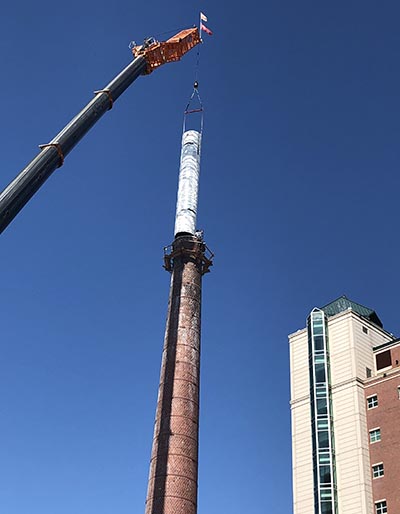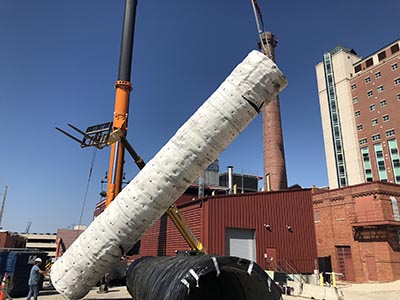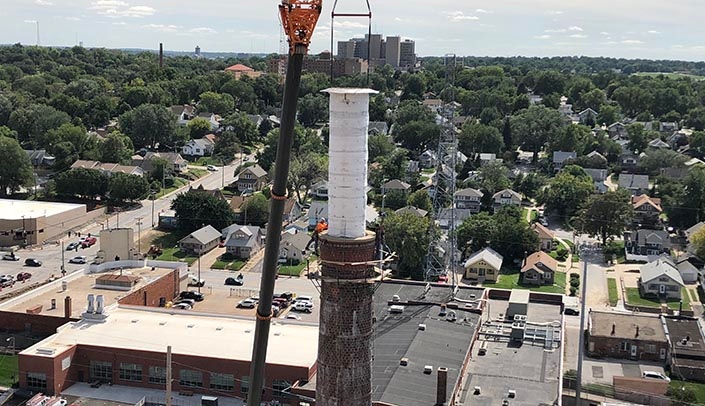Pssst! Want to hear all about a critical surgery performed on a patient with an, ahem, “extremely high profile?”
And, not to gossip, but we’re talking about a real campus celebrity, here.
Don’t worry, it’s safe to listen — this isn’t a HIPAA violation.
 |
(Photos courtesy Tod Ringenberg) |
The iconic brick chimney, built in 1919, was part of the original power plant. But, this past week, it received a new, insulated, stainless steel liner.
The goal of the project is to restore maximum energy efficiency to the plant’s boiler exhaust system and to maintain the structural integrity, said Tod Ringenberg, manager, capital construction.
You may have seen the crane, across from the Lied Transplant Center. The 450-ton crane has a 197-foot steel boom, plus a 72-foot jib.
It needed to lift 40-foot liner sections over the top of the 150-foot stack, plus have clearance for the cable-rigging components.
Pamela Carmines, Ph.D., who works in the Academic Research Services Building, said that as she watched from a window, she winced for the workers who were way up on a wooden catwalk at the top of the stack.
 |
Three sections are 40-feet long, the fourth is 30 feet. Each weighs approximately 12,000 pounds.
The liner sections are 6 feet in diameter; the chimney’s opening is only 6 feet, 4 inches, giving it about 3 inches of clearance.
“It’s sort of like trying to fish from a moving boat with a 270-foot long pole . . . with the wind blowing,” Ringenberg said.
So, why did this “patient” get surgery? Why did the UNMC chimney need new insides?
Previously, exhaust from the Central Utilities Plant’s boilers went up the chimney as wasted heat. But since the installation of a condensing economizer, those exhaust gases produce free energy and hot water for the Fred & Pamela Buffett Cancer Center.
The trouble is, when using fuel oil during mandatory energy curtailment periods, the change in stack temperature results in acidic moisture, which condenses, causing deterioration of the brick. The new insulated liner will help keep the chimney in top shape and operate with maximum energy efficiency.
Ringenberg said the project needed to be done at this time of year and planning started in 2017.
The patient should be healthy for a long time.
